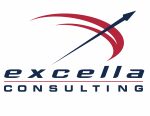This blog post is an excerpt from our recent report with Excella, Product Ownership: The Key to Successful Agile Transformation in Government. To read the full report, head here.
To understand why product ownership is the key to effective Agile implementation in the government, it is important to first understand why Agile has become an essential component of the progress made toward building and delivering better digital projects in the government.
According to the Agile Government Handbook created by the Agile Government Leadership program, Agile management or Agile project management is an iterative and incremental method of managing the design and build activities for engineering, information technology and new product or service development projects in a highly exible and interactive manner.
“Agile values individuals and interactions over processes and tools, customer collaboration over contract negotiation and responding to change over following a very fixed plan. It’s not that we ignore the items on the right, it’s that we focus on the first parts of those statements as the key drivers to delivering the right solutions,” said Cheng.
Agile is increasingly important in government, as citizens’ digital expectations of services continue to rise. As government IT teams and digital projects need to be more nimble, exible and reactive, Agile methodology, which works iteratively and more incrementally, allows projects and services to be tested by citizens as they are developed, then tweaked and xed throughout the process. Versions of the product are released early and often, and the process is more ef cient and reduces costs.
Further, the Agile movement has unquestionably been on the rise in government for several years. In fact, some 80 percent of major federal IT projects today describe themselves as “Agile” or “Iterative” according to a 2017 study from Deloitte.
Agile is becoming more critical to the success of government IT projects. But if government wants to execute Agile methodology effectively, and let it transform government in the way it potentially can, government must shift from traditional project management to an approach that instead focuses on product ownership.
In traditional government project management, the project manager is concerned with the sequencing of activities going into the creation of a project and keeping items and deadlines on track.
“Project management is still important for things like construction and manufacturing, where we are repeatedly building known items,” Cheng said. “However, in IT digital solutions, there is a lot of discovery, and we need to be able to identify the highest-value items, deliver those early and keep doing it often. That is where product ownership comes into play.”
Product ownership is “less about how or when you build it, and more about what it is you’re actually building” Cheng said. “Project management focuses on the process. Product ownership focuses on ensuring we are delivering something valuable.”
So how does a product owner do that? By setting the vision and roadmap for the product and truly understanding what the product is setting out to do and the value it provides the end user.






Leave a Reply
You must be logged in to post a comment.